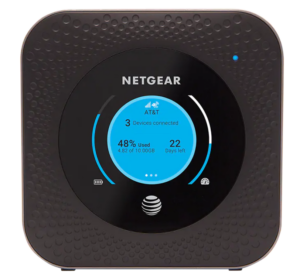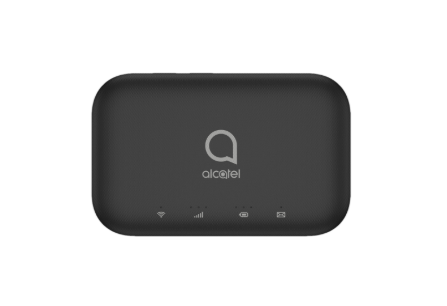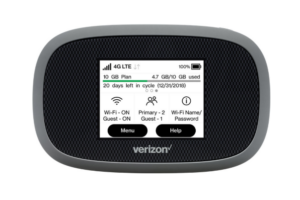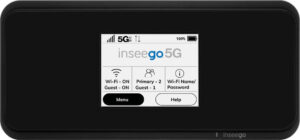There’s nothing wrong with playing a video game all alone (heaven knows I’ve spent a million hours playing Final Fantasy games by myself). But we’re in the 2020s now, and to get the best gaming experience you’ll want to get online to play with others. The easiest way to get online is to have a great home internet service. But if that’s not an option for you because you’re in a rural area or you’re constantly on the go, then you should invest in a quality mobile hotspot device that will keep you gaming from coast to coast. We’re going to review the hotspot devices that will keep you in the game, no matter where you are. Most mobile hotspots will only work with a specific network. For example, the Nighthawk LTE that we’re about to talk about only works on AT&T—unless you manage to unlock the device, in which case it may work on T-Mobile, but you shouldn’t count on that. So you’ll want to make sure that the device you’re buying is on a network you like. You’ll also want to make sure that the network has a great mobile hotspot plan that gives you enough data to fuel your gaming habit. Without that, the device is just a useless (and expensive) plastic brick. But that’s plenty of speed for gaming. You shouldn’t experience any latency or lag with that kind of speed on most games. Of course, if you’re a pro gamer (or want to become one), then you might want to invest in a super-fast 5G hotspot, which we’ll review in a moment here. Otherwise, the Nighthawk will do the trick. AT&T’s network has great coverage (coming in just behind Verizon) and fast data speeds (trailing T-Mobile by just a few Mbps). Gamers shouldn’t have an issue finding fast and reliable speeds with the Nighthawk on the AT&T network. But if you’re signing up for a new unlimited data plan to power your hotspot, you might be able to cut a deal. For example, if you get the AT&T Unlimited Extra plan (featured below), you can get the Nighthawk LTE for as little as $8.34 a month. Woohoo! You’ve got to love payment plans. If you’re looking for a good-enough device to hold you over until you switch to 5G, then this is the way to go. Of course, your data speeds will vary depending on where you’re located and what kind of plan you’re using. This device uses the Qualcomm MDM9207 chipset. This means you’ll likely get a top speed of about 30 Mbps, even though T-Mobile’s network is capable of much higher speeds. 30 Mbps is going to be enough for some casual gaming in WoW or Minecraft. But if you’re a competitive Fortnite player, then you might want to go with another device on this list. Here’s everything we love about the device. The Jetpack 8800L comes with a touch screen, two external antenna ports and two USB ports. That’s all very nice, but it’s the internal features that are really great. This device comes equipped with a built-in GPS, VPN client, and firewall. You’ll get security features like port forwarding, port filtering, and MAC filtering. Plus, you can create multiple Wi-Fi networks. Now that’s what I call a hotspot device. Another option is to check out satellite internet providers. There is one way to save some dough on the Jetpack, and that’s to get a new unlimited data plan from Verizon. The company will usually discount the hotspot device by about $100 when you sign up. Here’s what we love about the M2100. To be very clear: you will not get those kinds of speeds everywhere. In fact, most of the nation is not equipped with the necessary millimeter-wave infrastructure for it, and some rural areas probably never will be. But there is another kind of 5G, called ultra-wideband, that you’ll be able to pick up in more areas. This will still deliver very fast data speeds, but they won’t be anywhere near the gigabit speeds that you can get in some urban settings. While this might seem outrageous for such a small device, it’s actually cheaper than the competition (which would be NETGEAR Nighthawk 5G Mobile Hotspot Pro). This is just what happens when you’re on the cutting edge of a new technology. For many people, it will be worth waiting a few years until prices are lower and 5G networks are more robust. Speaking of 5G networks … The biggest downside to these devices is—you guessed it—the price. 5G phones can cost more than a grand. So make sure you check for the latest deals on new phones before you make a purchase. CERTAIN CONTENT THAT APPEARS ON THIS SITE COMES FROM AMAZON. THIS CONTENT IS PROVIDED ‘AS IS’ AND IS SUBJECT TO CHANGE OR REMOVAL AT ANY TIME.



